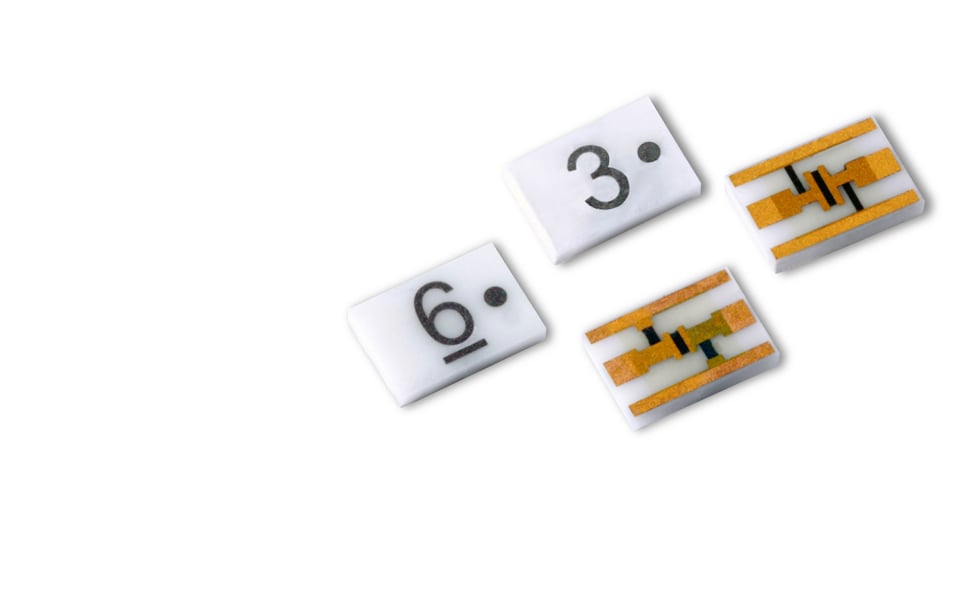High-reliability radio frequency (RF) components are designed and manufactured to ensure consistent and dependable performance in critical applications. Several factors contribute to the reliability of RF components:
Quality of Materials: The use of high-quality materials that can withstand harsh environmental conditions, temperature variations, and other stress factors is crucial. Materials should be selected for their durability and stability over time.
Robust Design: RF components need to have a robust design with computer engineering software and comparative analysis that considers factors such as thermal management, vibration resistance, and mechanical stability. This helps prevent failures due to physical stress or environmental factors.
Tight Tolerances: Precision in manufacturing is essential to maintain the desired electrical characteristics of RF components. Tight tolerances and part to part linearity ensure that the components meet specifications consistently, reducing the likelihood of performance variations.
Testing and Quality Control: Rigorous testing and quality control processes are employed during and after manufacturing. This includes testing for electrical performance, durability, and reliability under different operating conditions.
Traceability: Tracking the manufacturing process and materials used in each component allows for better quality control and facilitates identification of any issues that may arise. This traceability is crucial for addressing any potential problems.
Data Retention: Retaining data for the life of the program or mission is also important to customers in case of any problems that arise in the program lifecycle. This gives assurance of the RF component documented test data over the life of the program. This is provided by top tier manufacturers.
Environmental Testing: Components undergo various environmental tests, including thermal cycling, humidity testing, and vibration testing, to simulate real-world conditions and ensure their performance under different scenarios.
Compliance with Standards: Adherence to industry standards e.g. AS9100 and ISO9001 and specifications is essential for high-reliability RF components. This ensures compatibility with other components and systems and provides a benchmark for quality.
Long-Term Stability: High-reliability components are designed for long-term stability, meaning they should maintain their performance over an extended period without degradation.
Redundancy and Fail-Safe Mechanisms: In some critical applications, redundancy and fail-safe mechanisms are implemented to ensure continuous operation even if a component were to fail. This is especially important in mission-critical systems.
Manufacturers of high-reliability RF components often adhere to stringent quality management systems and certifications to demonstrate their commitment to producing reliable products for demanding applications. In a continuous effort to advance technology in the high reliability component market, Smiths Interconnect has introduced its latest innovation – the High Reliability TSX Chip Attenuator Series. This groundbreaking high-frequency precision all thin film surface mount chip attenuator promises to redefine the landscape with its compact design, high-reliability features, and cost-effective solutions for space and defense applications.
The Evolution of Attenuators:
Smiths Interconnect has extended its product line with the HR TSX Series, a remarkable addition to its high-frequency surface mount chip attenuators. This compact yet powerful solution is qualified for space and defense applications, meeting the rigorous standards of MIL-PRF-55342. The HR TSX Series is designed to operate seamlessly in harsh environments, making it an ideal choice for demanding aerospace and defense requirements in accordance to AS9100.
Key Features and Advantages:
- Broadband Performance up to 50-GHz: The HR TSX Series boasts excellent broadband performance, offering a frequency range of up to 50-GHz. This ensures that the attenuator delivers reliable results across a wide spectrum, making it versatile for various applications.
- Reduced Footprint with Small Form Factor: With a small 0604 surface mount package, the HR TSX Series significantly reduces the overall footprint. This compact design allows for efficient use of space, a crucial factor in applications where size constraints are paramount.
- Optimized Return Loss for Multiple Frequency Ranges: The chip attenuator is engineered to provide optimized return loss across multiple frequency ranges. This unique feature allows customers to utilize a single chip in multiple applications, reducing the Bill of Material (BOM) count and, consequently, the cost of ownership.
- Group A, B, or C Testing Based on MIL-PRF-55342: The HR TSX Series can be ordered with different testing options (Group A, B, or C) based on MIL-PRF-55342. This flexibility ensures that the attenuator meets specific program requirements and provides assurance through qualification data included with product delivery.
- Robust Construction for Harsh Environments: The attenuator's design, using a robust all thin film process technology on an alumina substrate, ensures durability in harsh environments. This makes it a reliable choice for space and defense applications where resilience is paramount.
- Multiple Attenuation Values and Low VSWR: Offering 1 to 3 watts of power handling performance and a wide range of attenuation values (1-10, 15, and 20dB), the HR TSX Series provides flexibility for various applications. Additionally, its low Voltage Standing Wave Ratio (VSWR) increases transmitted power, contributing to enhanced performance.
Conclusion:
Smiths Interconnect's HR TSX Series represents a significant leap forward in the realm of high-frequency surface mount chip attenuators. Its combination of small form factor, robust construction, and versatile performance make it an attractive choice for space and defense applications. By reducing the Bill of Material count and offering a gainful solution, Smiths Interconnect continues to contribute to the advancement of technology in critical sectors.


